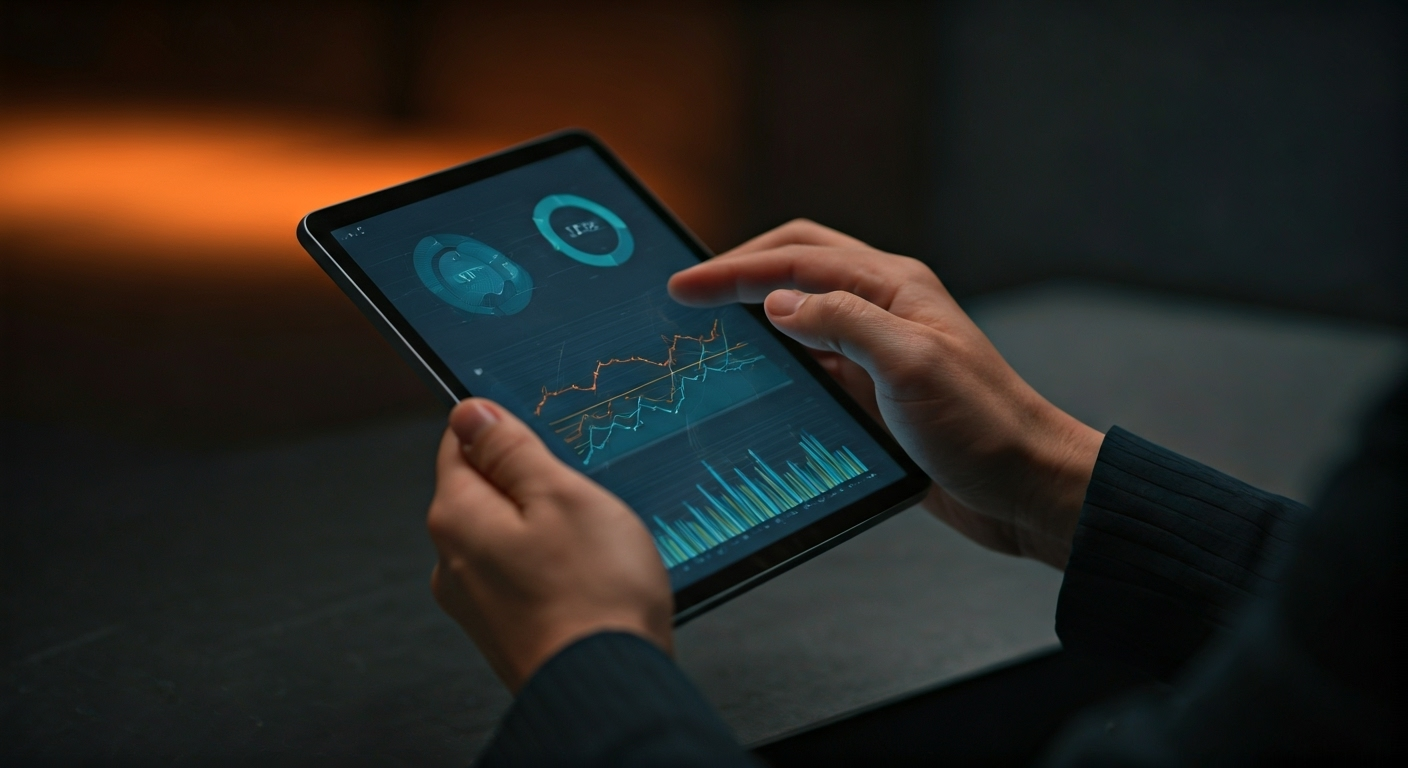Understanding Energy Data Management for Your Business
Understanding Energy Data Management for Your Business
Key Highlights
- Energy data management is key for businesses that want to cut costs and make their energy use more efficient.
- The use of IoT, smart meters, and improved energy management systems helps with easier data collection and makes it simpler to find ways to use less energy.
- Rules from regulators and the push for more sustainable work are big reasons companies update how they manage energy data.
- When businesses look at their energy data in the right way, they can lower their carbon footprint and keep up good practices over time.
- When the data is right and people understand it, companies get better workflows and clearer views of how much energy they use.
- Companies in the U.S. have to follow strict energy rules and deal with more pressure each year to meet their sustainability goals.
- Moving into the introduction, let’s talk about the basics of energy data management and why it matters so much for operational efficiency.
Introduction
Defining Energy Data Management in the Modern Business Landscape

data management is about how we collect, look at, and use energy usage numbers in an ordered way. This helps us make good choices and improve energy efficiency. In the energy industry, companies use energy data management to save money, cut carbon emissions, and follow the rules and regulations.
New analytics and better technology have turned energy data management into an important part of planning for businesses. This gives them the tools to stay ahead in the energy market, handle their environmental tasks, and make sure their work fits the way the energy industry changes.
To learn more, let’s break down some important ideas and words you will find in energy data management systems.
Key Concepts and Terminology Explained
Understanding energy data starts with knowing some key words. "Energy data" is the information about how much energy people use, when usage is highest, and how equipment works over time. Good "data management" makes sure this information is collected, stored, and checked in an orderly way. This helps people get the right insights and know what to do next.
"Analytics" means using tools to look at big amounts of data. It finds patterns or is used to see where things are not working well. Companies use this to find out what needs to change to reach better sustainability. Then, "management systems" blend reporting, monitoring, and tools that help control energy use. All these work together to make sure everything runs smooth and all data goals are met.
When you use these ideas, your business can get a clearer picture of how things work. Putting in strong systems and using common words helps connect energy use with money plans, rules from the government, and caring for the environment. Working this way means people can set goals based on real facts and measure their progress.
Next, let’s talk about how energy data is not the same as old ways of utility tracking.
How Energy Data Differs from Traditional Utility Tracking
Traditional utility tracking looks at your energy bills each month and checks how much energy you use in a simple way. Energy data management takes a much deeper look. It helps you really understand and improve how you use energy.
Utility tracking is often done by hand, through manual reports. But energy data management uses new tools and technology. It gets data from sensors and IoT devices. This gives you real-time information to find problems and uncover ways to use less energy. Also, you do not get detailed analytics with old methods. Energy data management, in contrast, provides reports that predict what will happen next. This helps you fix your use and make it better.
Switching from tracking your utility bills to using energy data management lets your company look past the basics. It points you to smart steps that lower costs. It also helps with meeting sustainability goals and following rules called regulatory compliance.
Next, we will look at why energy data management is important for US businesses.
Why Energy Data Management Matters for U.S. Businesses
Energy data management is now a key part of running a business in the U.S. It helps companies save money and meet strict rules. Many companies use energy data systems to help the business keep up with its sustainability goals and handle energy costs better.
When businesses track their energy usage closely, it lets them meet government rules and helps lower greenhouse gas emissions. This brings together better ways to work, lower energy costs, and care for the environment. Because of this, energy data management is an important part of new business plans.
Let’s take a look at how it helps save money and improve everyday work.
Cost Savings and Operational Efficiency
Energy data management is key to lowering the cost for a business and making work go smoother. By keeping a close eye on energy data and using strong energy management systems, companies can get many big benefits:
- Substantial Cost Reductions: Good analysis of your energy consumption tells you where you spend too much. When companies find these patterns, they use less energy, pay smaller energy bills, and do better with their company's bottom line.
- Improved Operational Efficiency: When you look at how equipment uses energy and check for high-use times, you see where things do not run well. Fixing these spots helps make daily workflows and tasks better.
- Strategic Budgeting: Using an energy management system means you plan for your energy needs the right way. This helps you put your resources to work in the best spot.
Managing energy data in this way lets organisations use less energy, which brings down the cost of running things. Adding analytics and tools to see your numbers over time means you watch your progress, make new plans, and always find ways to do better.
Now, let's take a look at how regulatory compliance fits with your sustainability goals.
Regulatory Compliance and Sustainability Goals
Today, caring for the environment is part of what every organisation does. Following the rules set by the government now goes hand in hand with reaching goals for sustainability. Energy data management helps companies meet targets that require them to lower emissions.
Features like real-time data collection and analytics let companies track their carbon footprint. This means they can see where their greenhouse gas emissions come from and make good choices about how to reduce them. When companies use such tools, they avoid getting fined and also help keep the earth clean.
When an organisation focuses on these goals, people see them in a better light. They can attract clients who care about the planet and build trust with everyone involved, like stakeholders. Using strong energy data systems means companies follow the rules and show that they work for a better, more sustainable tomorrow.
Now, let’s look at what makes up an important energy data management system.
Core Components of an Effective Energy Data Management System
Energy data management systems have some key parts. These important parts help make sure we can watch and use energy in the best way. The main parts are data collection methods, steps to check data for mistakes, and parts of the system that help us look at the data. These make up the base of these management systems.
These tools give us real-time insights in a simple and systematic way. This lets organisations make their workflows better and helps them reach their sustainability goals. Also, special software modules help with reporting and decision-making. This gives businesses helpful strategies that they can use right away. It also helps build a culture where people work with more care and take good care of the environment.
Let’s look at why data collection and data checks are so important in energy data management systems.
Data Collection and Validation Methods
Efficient data management for energy systems depends a lot on strong data collection and checking steps. The systems use sensors, meters, and IoT devices to get exact data about energy consumption.
Before any data is saved or looked at, it must go through checks to see if it matches the set standards. The checking steps use automatic quality checks. These checks use settings that can be changed to make sure all details are right. Here’s a simple text table showing these parts:
Component Details Sensor Monitoring Captures real-time energy consumption metrics Data Validation Ensures collected data adheres to regulatory standards Systematic Recording Logs and stores validated data for future analytics When you use these steps, a business can get a steady stream of good, true energy data. This data is important when you want to make things work better or for any reports.
Next, we will talk about analytics, reporting, and decision-making tools you can use in an energy system.
Analytics, Reporting, and Decision-Making Tools
Analytics take raw energy data and turn it into facts you can act on. Dashboards show what is happening over time. They help businesses see energy trends, spot where things are not working right, and make choices about how to save money.
Reporting modules put together full reports, so you can share clear updates with stakeholders about energy consumption and what you are doing for sustainability. These documents make it easier to keep people in the loop. Decision-making tools let like managers and team leaders use this new knowledge. They can make changes, like updating equipment or changing the way work is done, to use less energy.
When you bring these tools together, you use energy data in the best way. You do not just watch your energy numbers; you use them to be more efficient, follow rules, and move the company toward its long-term sustainability targets.
Now, let's look at how technology helps boost energy data systems.
Leveraging Technology to Enhance Energy Data Management
Modern technology, such as energy management software, the IoT, and AI, is changing the way we use energy data. Businesses use these tools for real-time tracking, to look ahead, and to make better use of the energy they get and use.
When companies use these smart tools, they can open up energy data and see what is really happening. This lets them change how they work and make better choices each day. By doing this, companies can reach their energy goals faster and more easily. This path helps them grow in a good way over time.
Next, we will look more at how the IoT and smart meters help with energy management and transparency.
Role of IoT and Smart Meters
IoT networks and smart meters are changing the way we manage energy. IoT devices always collect energy data and check equipment performance. This real-time collection lets businesses find problems early and make their workflows better.
Smart meters give exact measurements of how much electricity, cooling, or gas you use. These meters help businesses look at usage patterns for each part. This means you can make small changes for cost reduction.
Both IoT and smart meter technology are important for U.S. businesses to reach sustainability goals and keep strong operational efficiency.
Next, we will talk about how to connect energy management software for business growth.
Integrating Energy Management Software for Business Growth
Energy management software helps businesses grow. It makes workflows simple. It can also help cut energy costs. You get more transparency about how energy is used. This software has tools to check energy data, give you reports, and make use of analytics.
When you use this software, you can match up your work plans with your energy goals. This makes sure you do not waste resources or money. These systems also work with other technology like IoT. This means you have one easy way to manage energy across all of your business operations.
To sum up, good data management is very important. Managing energy data well helps you know where energy goes and how to use it better.
Conclusion
To sum up, knowing how energy data management works is very important for businesses that want to do well in today’s world. When companies use good ways to handle energy data, they can save a lot of money and work better. They also stay on track with what is needed for sustainability and regulatory compliance. New technology like IoT and energy management software help businesses gather, check, and use energy data in smarter ways. With energy management always changing, it is good for businesses to learn more and take action. This will help them make choices that lead to growth and be more sustainable. If you want to see how energy data management can help your business, reach out now for a talk!
Frequently Asked Questions
What types of businesses benefit most from energy data management?
Manufacturing industries, logistics companies, and facility management teams use energy data systems to get real value. These tools help them lower energy costs. They also make their work run better and make sure the equipment performance is right for business needs and the environment.
How does energy data management support sustainability initiatives?
Energy data management lets organisations see their carbon footprint and greenhouse gas emissions. When they get easy-to-understand insights, they can find ways to improve. These systems help to match energy usage with sustainability goals in a better way. This allows them to make good choices so that their energy data can support a more sustainable future.
What are common challenges in implementing energy data management systems?
Some big challenges are the high first costs, rules that can be hard to follow, and people not wanting to change. Making sure data collection is right and fitting new systems with old workflows can also bring problems when you start something new.
How can businesses ensure the security of their energy data?
To keep energy data safe, businesses can use strong management systems. These systems have features like encryption, transparency, and secure ways to report information. It is also good to check energy data systems often with regular audits. This helps with safety and following the rules.
What trends are shaping the future of energy data management in the U.S.?
Emerging trends in energy data include updates with AI-driven analytics, better ISO market changes, and more IoT technology used. These new ways help energy data systems be faster and more flexible. They can also grow bigger to fit many different industry needs..




